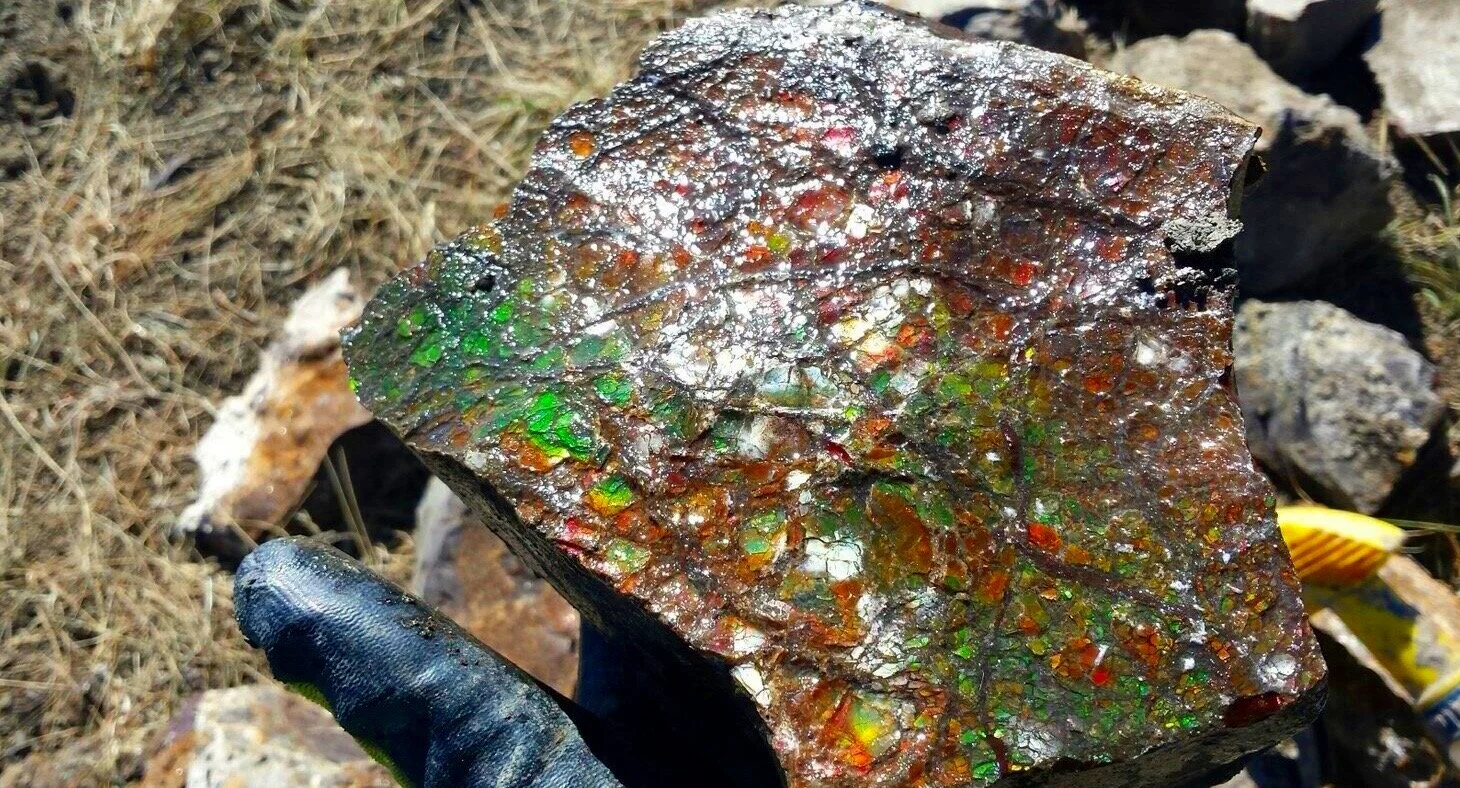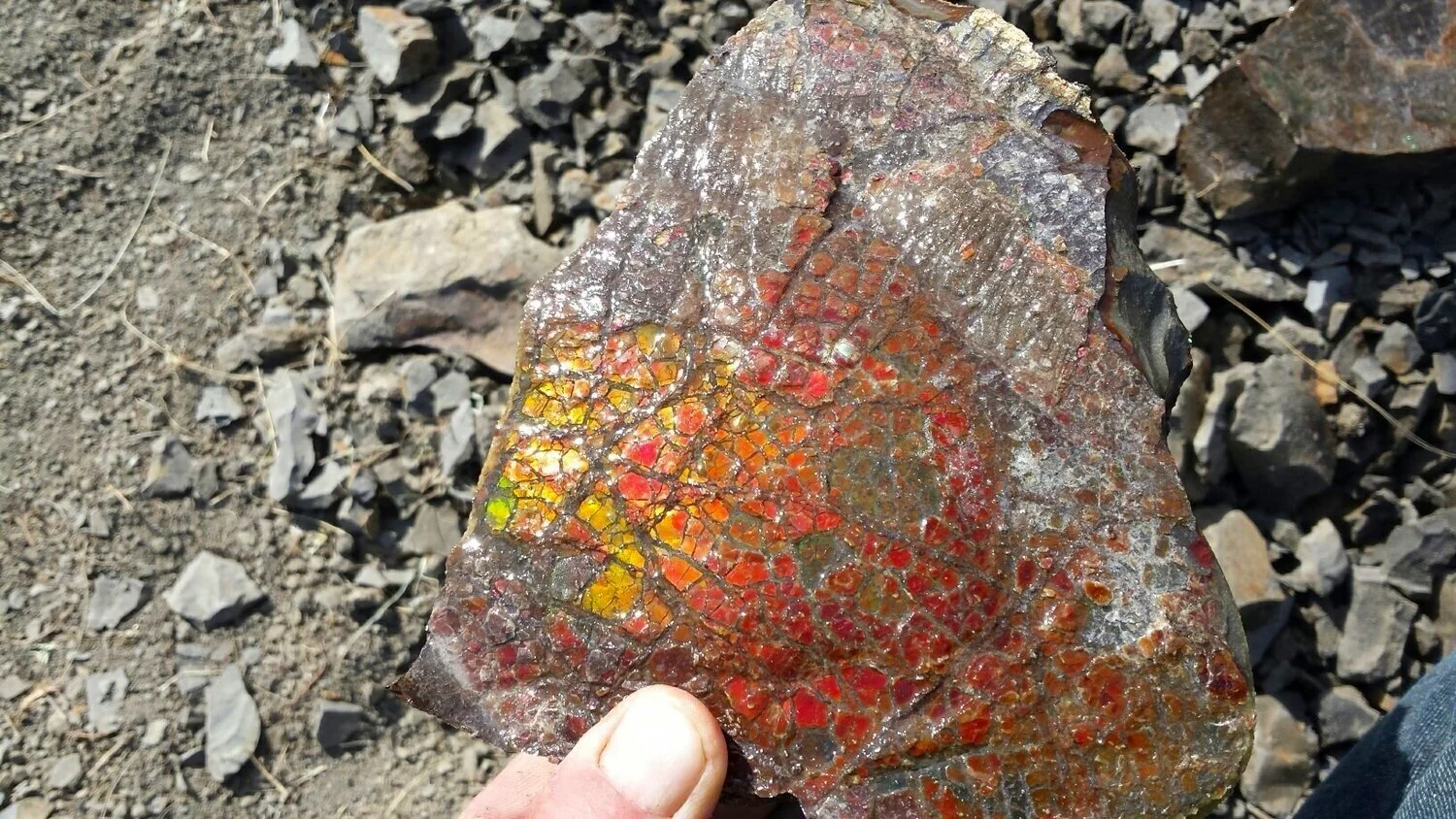Ammolite Mining
Ammolite mining takes place in the Bearpaw Formation, which used to be the Bearpaw Sea of the Western Interior Seaway. This formation extends from Alberta to Saskatchewan and into Montana. Commercial extraction of the ammolite gemstone occurs only in Alberta, due to the superior grade of gem found in this region.
Mining is mechanized but fairly basic. Pits are dug up to 100 metres deep and the excavated material is screened for its potential gem contents. The pits are further examined by hand - in fact every centimetre of exposed shale is carefully observed due to the valuable nature of this gem. Approximately 50% of the ammolite mined is suitable for jewellery, with only 1-10% naturally AA grade (the top-grade according to the International Gem Society).
Ammolite Mining Zones
Ammolite deposits are found in several layers. The shallowest of these layers, the “K Zone”, lies approximately 15 metres below the surface and extends 30 metres down. The "K Zone" will only have a very small amount of AA grade ammolite. The ammolite within this layer is covered by siderite concretions and is usually cracked and fractured through deposition—this is the crush or “dragonskin” material.
Beginning 20 metres below the crush material is the “Blue Zone”. Ammolite from this zone, which extends 65 metres further down, is usually compressed with a thin layer of pyrite rather than siderite concretions. This is the sheet material with fewer or no fractures. This zone holds the majority of AA grade ammolite and is where we collect most of our gemstones. Interestingly, "Blue Zone" ammolite appears to only be found in southeastern Alberta. This is why "Blue Zone" ammolite is the most desirable and rare. Lower grade "K Zone" ammolite can be found in other areas, such as some parts of the northwestern United States and in Central Alberta near the Red Deer River.




